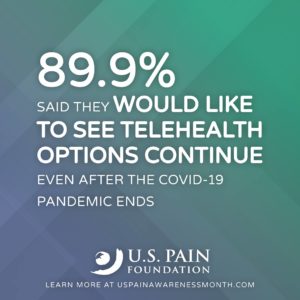A new survey from the U.S. Pain Foundation reveals that people in pain are knowledgeable about and interested in accessing multidisciplinary care – but cost gets in the way.
Leading up to Pain Awareness Month this September, the U.S. Pain Foundation conducted a survey of 1,581 people with pain to better understand barriers to individualized, multidisciplinary care. Most respondents in the survey live with musculoskeletal conditions (80.9%).
Research shows that a multidisciplinary approach to pain management that includes exercise therapy, pain education, and behavioral therapy brings the most long-lasting pain relief. In the survey, the most common treatments respondents used included heat and cold therapy (60%), prescribed opioids (58.1%), and prescribed non-opioids (54.3%).
In contrast, only 21.6% reported seeing a physical therapist, and 22.1% have accessed counseling, despite guidelines encouraging both as a first-line approach to pain management.
Seventy-five percent of respondents said that lack of information was not a barrier to accessing care. Instead, cost stood out as the most significant barrier between patients and the treatment options they wanted.
Nearly 30% responded that cost is a barrier to physical therapy. Seventeen percent reported that cost is a barrier to accessing talk therapy, and 26.8% said cost has prevented their access to exercise programs.
“The reality is that patients often know what treatments might help them, but they’re too costly or difficult to obtain for other reasons, like insurance limitations,” Nicole Hemmenway, CEO at the U.S. Pain Foundation, told Fern Health. “What seems affordable to the average person is very likely to be too costly for someone living with pain, who probably has difficulty working because of pain and is therefore on an extremely tight budget.”
High copays were most commonly a barrier to physical therapy (26%) as well as counseling/talk therapy (16.4%). Additionally, respondents reported that insurance limits like annual visit caps and prior authorization most often prevented them from accessing physical therapy (33%); followed by massage therapy (30.9%), chiropractic care (25.6%), and acupuncture (25.6%).
The value of telehealth for pain management
 In the survey, slightly less than half of respondents said that the COVID-19 pandemic has made their symptoms worse. Of those, 62% responded that stress about COVID-19 has increased their pain. Research shows that stress worsens pain symptoms. Chronically tense muscles can also create new pain symptoms.
In the survey, slightly less than half of respondents said that the COVID-19 pandemic has made their symptoms worse. Of those, 62% responded that stress about COVID-19 has increased their pain. Research shows that stress worsens pain symptoms. Chronically tense muscles can also create new pain symptoms.
Nearly half of respondents who said COVID-19 impacted their pain management reported that the locations where they normally receive care are closed, and 43.6% said that they’re not seeking out their normal care because they’re concerned about contracting COVID-19.
In response to access issues like those reported in the survey, telehealth has emerged as a convenient and safe way to access care. Nearly 90% of survey respondents said they hope telehealth access continues beyond the pandemic, as well.
“If there is one silver lining from the pandemic, it is the leaps and bounds we’ve made in increasing the availability of telehealth,” said Hemmenway. “I think that previously, health care professionals and payors knew telehealth could be beneficial for certain patients and certain situations, but there was no real incentive to use it on a large scale. Now, I think they’re realizing that it’s not just possible to provide meaningful care virtually, it’s also incredibly convenient to do so.”
There are no objective tests for measuring pain. Instead, providers ask patients to self-describe their pain symptoms – something that can easily be done from home. Gold-standard pain assessments, such as those Fern Health uses to onboard members, can also be incorporated into digital chronic MSK painprograms.
How employers can help
We asked the U.S. Pain Foundation how employers can better support employees living with pain. Hemingway recommended three approaches employers can take.
First, employers should become well-versed in and willing to provide workplace accommodations.
“We’ve seen a lot of employers make the switch to telework as a result of COVID-19 and realize that their employees are just as, if not more, productive as they were working in person,” Hemmenway said. “We hope that telework continues to be an option even once the pandemic is over, especially for people who have physical limitations.”
She also encourages employers to involve people with chronic health conditions in insurance plan design, and ensure multidisciplinary care coverage. The U.S. Pain Foundation also encourages implementing free health and wellness programs to employees.
Employers should also take the time to better understand what it’s like to live with a chronic health issue, Hemingway said.
“Finally, it’s important for managers to be well-informed on what it’s like for an employee living with a chronic health issue,” she said. “They should be trained on the challenges these individuals may face and given resources and tools that they can share to help them balance their health and their career.”
Ready to support your employees living with pain? Get in touch to learn more about Fern Health’s multi-disciplinary approach to pain management.






